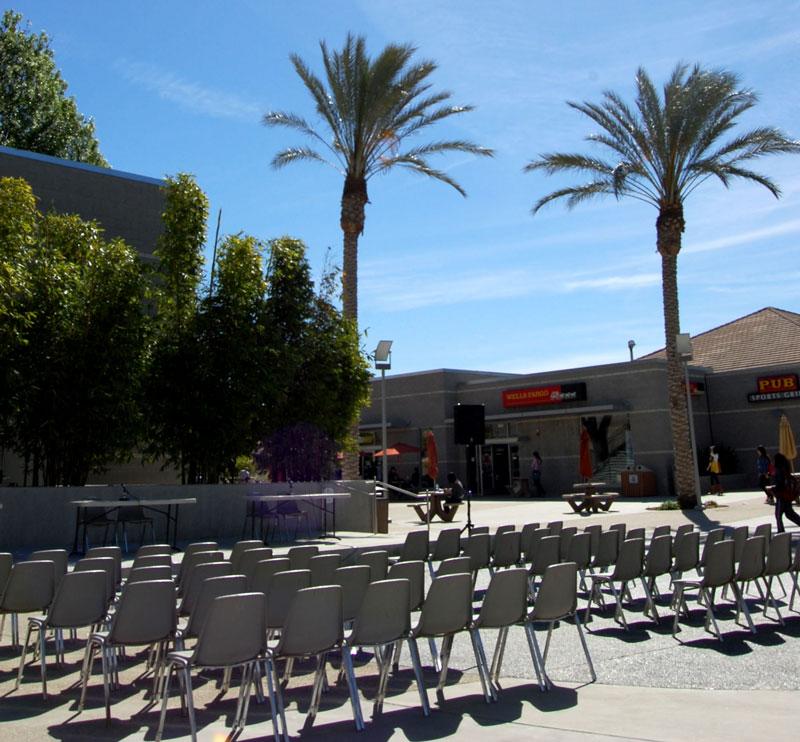
The first round of Meet the Candidates debates was held on Monday to introduce the at-large senator contenders as candidates spoke of student participation and input to a barren audience.
The event, which was supposed to start at 11:30 a.m. the Plaza del Sol area was empty until around 11:40 a.m. when Dan Monteleone, director of elections, arrived to finish setting up tables. Three of the five candidates arrived soon after and the introductions started around 11:50 a.m.
At the start of the introductions, there were two students in the audience. As the debates continued, the seats filled up a little bit more. It was a warm day (77°F, according to WeatherBug) and the sun was directly overhead without any available nearby shade.
The debate is held outside instead of in the Grand Salon for a couple of reasons.
“People are more likely to walk in and sit down. Also, people who aren’t intentionally at the event get to hear the debates,” Monteleone said.
The mediator, Monteleone, continuously invited the audience to write whatever questions they had and give them to him but no questions were asked.
Two of the four seats at-large are available. An at-large senator is “A senator whose constituency is all students, instead of just Upper division, Lower Division, Graduate, or a College,” said Monteleone.
The five candidates were Martel Okonji, Jordan Tandowski, Dennis Wallon, John Ryan Biltz and Christian Garcia.
Okonji introduced himself as a third year Business Law major and current Lesbian Gay Bisexual Transgender Alliance (LGBTA) president. His motivation for running is “getting unheard voices heard,” said Okonji.
Tandowsky is a CTVA major. “I am running for senate for the same reason I got into film: to show people what the world should be, not what it is,” Tandowsky said.
Wallon, a freshman, who is also a CTVA major said he was involved at his high school and therefore has the necessary skills to benefit A.S. and CSUN students.
Biltz, who arrived late to the debate, is a sophomore.
“The At-Large position is crucial to the structure of this university, particularly because it is so large,” Biltz said.
Garcia did not attend the debate.
“Mr. Garcia had a class during the time,” Monteleone said. “He is providing me with a copy of his schedule to verify that.”
On several of the issues, the candidates had similar answers. When asked how they plan to allocate money to the various clubs and organizations despite a likely reduced budget for next year due to a reduced student population, the candidates never quite answered the question.
Tandowsky did suggest looking to older ideas that worked well for new solutions and Okonji suggested looking for sponsorships.
In terms of what clubs can do to raise funds themselves, most answers just referred the clubs to A.S., although Tandowsky suggested scholarships and potentially pooling funds between clubs to collaborate on events.
Constitutional Amendment Two would remove the at-large senate seats. This would be the final election for those positions. However, when the issue was brought up, the candidates did not appear troubled.
Biltz seemed least concerned, likening it to “cleaning house,” although all the candidates did say that it was an important position because it encompassed anyone who might not be part of another represented group.
Additional information about the candidates will be available on the ballot as well as through any campaigns.




